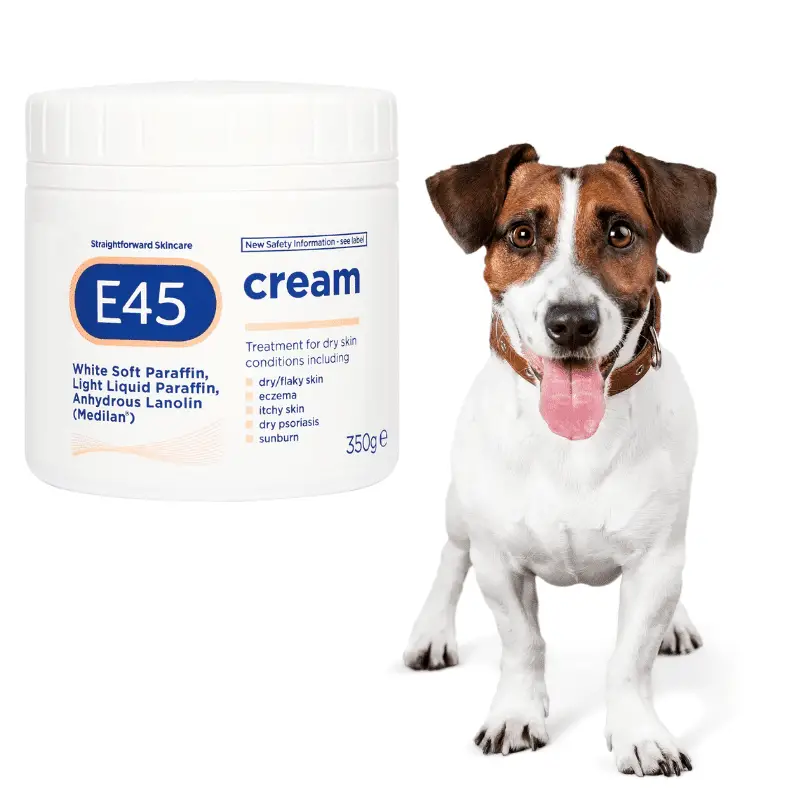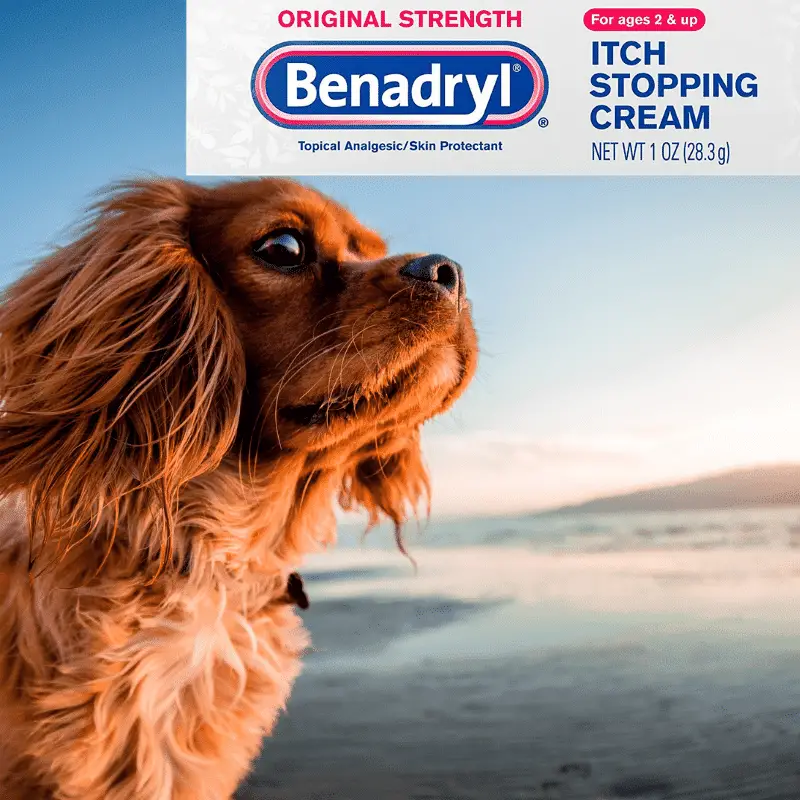Like humans, dogs need to be cleaned regularly to stay healthy and smell fresh. But can you use Dove soap on a dog? While Dove effectively cleans human skin, it’s not the best choice for cleaning your dog.
The main reason is that Dove is designed and made for human skin. The pH balance of a human and a dog are entirely different. In comparison, dogs have more alkaline than humans, with a much higher ph level.
This is why you should not use dove soap on a dog: Dove soap on dogs will strip away the natural oils from a dog’s fur and skin, leading to dryness and itchiness. In extreme cases, it can leave your dog vulnerable to viruses, bacteria, and parasites.
About Dove Soap
Dove soap focuses on the human pH balance and can help to effectively wash away bacteria, while the ¼ moisturising cream and mild cleansers help retain the skin’s moisture. This leaves skin feeling soft, smooth and healthy-looking. The Dove Bar has been dermatologically tested and is ideal for all skin types in humans. It is also suitable for daily use on the face, body and hands. No mention of dogs!
In addition, Dove contains ingredients like Hexyl cinnamal and Zinc oxide that are harmful if a dog ingests them. For these reasons, it’s best to choose a soap or shampoo that is specifically designed for use on dogs. Using the right products can avoid any problems that may arise later.
Specifically Designed For Dogs
BUGALUGS Oatmeal & Aloe Vera Dog Shampoo
PET HEAD Oatmeal Shampoo for Sensitive Dogs
The Problem When Using Dove Soap On Dogs
While dove soap is widely considered gentle and safe for human skin, the same cannot be said for dogs. Using dove soap on dogs can cause several problems.
For one, it can remove essential oils from their fur, leading to dry skin and itching. It can also be challenging to remove whilst bathing, which could cause discomfort for your dog.
Additionally, it is harmful if your dog ingests any Dove soap due to some ingredients like Zinc oxide.
Finally, some dogs may have an allergic reaction to the soap, which could lead to irritation. So while dove soap may be perfectly fine for humans, it’s best to avoid using it on your dog.
Let’s learn more about the indivual Dove soap ingredients. You can also find these ingredients in many other cosmetic products.
Ingredients
Ingredients are correct when writing this article; however you should always check the packaging, companies are known to make adjustments to the ingredients list.
Sodium Lauroyl Isethionate is a surfactant that can be found in Dove soap. It is known for its cleansing properties and is commonly used in cleansing products because it is gentle on the skin.
Stearic acid is a long-chain fatty acid that is found in animal fats and oils. It is also present in some plants, including cocoa butter and shea butter. Stearic acid is a versatile compound with many uses in industry and manufacturing. Unlike other fatty acids, stearic acid does not have a double bond. This gives it a higher melting point than other fats, making it useful for specific applications. For example, stearic acid is often used as a hardening agent in candles and soaps. It is also used in the production of rubber and plastic. In addition, stearic acid can be used as an emulsifier or lubricant in food processing.
Lauric acid is a type of fatty acid found in coconut oil. It makes up around 50% of the oil’s composition. Lauric acid has many beneficial properties, including antimicrobial, antibacterial, and antiviral activity. When applied to the skin, it can help to reduce inflammation and improve hydration levels. In addition, lauric acid helps treat acne and other skin conditions. Lauric acid is believed to be one of the reasons why coconut oil is such an effective moisturiser.
Sodium palmate is a surfactant and emulsifier used in a variety of industries, including cosmetics and personal care, cleaning, and food processing. It is derived from palm oil and can be found in many products, such as shampoos, conditioners, soaps, and detergents. Sodium palmate is known for its ability to create foams and lathers, which makes it an ideal ingredient for cleansers and shampoos. It is also effective at suspending other ingredients in a product, such as pigments or fragrances. In addition, sodium palmate helps keep products from separating and extends products’ shelf life by preventing mould and bacteria growth.
Aqua, also known as water, is one of the most commonly used ingredients in cosmetics. It has a variety of benefits for the skin, including hydrating and soothing. In addition, water helps to dilute other ingredients in a cosmetic formulation, making them easier to apply and absorb by the skin. While there are many benefits to using water in cosmetics, it is important to remember that it can also dry skin if used in too high of a concentration. Therefore, choosing products containing other hydrating ingredients, such as glycerin or hyaluronic acid, is crucial to help keep the skin moist and healthy.
Sodium isethionate is a surfactant and cleansing agent found in many personal care products, such as shampoos and facial cleansers. It is derived from isethionic acid, a natural coconut oil component. Sodium isethionate lowers the surface tension of water, allowing it to spread more quickly and penetrate dirt and oils. It is also an effective emulsifier, which helps keep oil and water-based ingredients combined. As a result, sodium isethionate can help improve product lather and cleansing power. In addition, it is gentle on the skin and hair, making it ideal for use in personal care products.
Sodium Stearate is a white, waxy substance often used as a stabiliser or emulsifier in cosmetics and other products. It has a relatively high melting point, which makes it an ideal choice for products that need to maintain a consistent texture at high temperatures. Sodium Stearate is also known for binding to other molecules, making it an effective thickening agent. In addition, Sodium Stearate is often used as a “buffering” agent, which helps regulate a product’s pH levels. As a result, Sodium Stearate is a vital ingredient in many different types of products.
Cocamidopropyl Betaine is a synthetic amino acid derived from coconut oil. It is a surfactant, emulsifier, and foaming agent in many personal care products such as shampoos, conditioners, body washes, and face cleansers. Cocamidopropyl Betaine provides mild cleansing properties and helps to create a rich, foamy lather. In addition, it can help to soften the hair and skin and improve the feel of products.
Sodium palm kernelate is a sodium salt derived from palm kernel oil. It is used as a surfactant in laundry detergents, shampoos and soaps. When used in laundry detergents, it helps to remove dirt and stains from clothing. Sodium palm kernelate added to shampoos helps create a rich lather that cleans the hair and scalp. When added to soap, it helps create a dense, creamy foam that is used for cleaning the body. Sodium palm kernelate is also an effective emulsifier, meaning it can help to bind together water and oil-based ingredients. As a result, it is often used in cosmetic formulations, such as lotions and creams.
Glycerin is a transparent, colourless, odourless, and viscous liquid widely used in pharmaceuticals and cosmetics. It has a sweet taste and is often used as a sugar substitute or additive in food production. Glycerin is a byproduct of soap manufacture and can also be produced from animal fats and oils, in addition to its use in the food industry. Glycerin is also used as an emollient, humectant, and lubricant in various cosmetic products.
Parfum is an aromatic composition for products such as perfumes, colognes, soaps, and lotions. These products are generally created by combining fragrance oils with a solvent, such as alcohol or water. The strength of the fragrance can vary depending on the concentration of the oils used. Parfums are often classified into different families, such as floral, woody, or spicy. In addition to being used in personal care products, fragrances are also commonly added to candles, soaps, and even some food items.
Sodium chloride is a common ingredient in many cosmetics and personal care products. It is most commonly used as a preservative but has other functions. Sodium chloride can help to control the pH of a product, prevent the growth of bacteria, and help dissolve other ingredients. It is often used in shampoos, conditioners, lotions, and other hair and skincare products. While sodium chloride is generally safe for cosmetics, it can irritate if it comes into contact with the eyes or mucous membranes.
Tetrasodium EDTA and Tetrasodium Etidronate are both common ingredients in cosmetics and personal care products. EDTA is an abbreviation for ethylenediaminetetraacetic acid, while etidronate is short for etidronic acid. Both compounds are used as chelating agents, meaning they bind to metals and other minerals to prevent them from interacting with other ingredients in the product. This can help to stabilise formulations and prevent unwanted reactions. In addition, both EDTA and etidronate effectively boost the efficacy of other elements, such as surfactants and emulsifiers. As a result, they are often used in shampoos, conditioners, soaps, and other cleansing products.
Alpha-isomethyl ionone is a synthetic fragrance compound used in a wide range of products, from perfumes and cosmetics to detergents and cleaning products. It has a floral, slightly fruity aroma that is very popular in commercial fragrances. Unlike natural compounds, which can be expensive, alpha-isomethyl ionone is relatively inexpensive to produce synthetically.
Citronellol is a naturally occurring compound found in several plants, including citronella, lemongrass, and geranium. Its pleasant, floral scent is used in various cosmetics and skin care products. In addition to its pleasant smell, citronellol has some properties that make it beneficial for the skin. For example, it’s been shown to have antimicrobial and antifungal effects. It can also help to soothe irritated skin and reduce inflammation. As a result, citronellol is a popular ingredient in a wide range of skincare products, from face creams, soaps, and lotions to shampoos and conditioners.
Coumarin is a type of organic compound found in many plants, including various known species of fragrant grasses. It has a sweet, woody scent and is often used as a flavouring agent in foods and beverages. Coumarin is also used in perfumes and cosmetics, where it helps to create a pleasing scent. In addition, coumarin has natural anticoagulant properties, making it useful in specific medical treatments.
Hexyl cinnamal is a synthetic fragrance ingredient used in various cosmetics and personal care products, ranging from shampoos and conditioners to lotions and perfumes. It is a clear, pale yellow liquid with a sweet, floral scent. Although it is considered safe for use in cosmetics, some people may experience skin irritation or sensitisation when exposed to hexyl cinnamal. The European Union has classified hexyl cinnamal as a possible allergen. Despite this, hexyl cinnamal remains a popular fragrance ingredient due to its pleasant aroma and relatively low cost.
Limonene is a chemical compound found in the rinds of citrus fruits. It’s commonly used as a fragrance or flavouring agent in cosmetics and food products. Limonene has been shown to help improve skin barrier function and reduce inflammation. Limonene has antimicrobial and antifungal properties, making it an effective ingredient in natural cleaning and personal care products.
Linalool is a natural organic compound that is used as a fragrance in many cosmetics and personal care products. It is a member of the linalool family, including several other fragrant compounds. Linalool has a floral, woody smell and is often used in perfumes and colognes. It is also used in soaps, shampoos, and skin care products. In addition to its pleasant scent, linalool has several other benefits. It is an antiseptic and anti-inflammatory agent that can help reduce anxiety and stress. Linalool is also a powerful antioxidant, making it an essential ingredient in many anti-ageing products.
CI 77891, also known as Titanium Dioxide, is a common ingredient in many cosmetics and personal care products. It is used as a pigment to provide whiteness and opacity and can be found in products such as soaps, lotions, foundations, powders, and eye shadows. Titanium Dioxide is a safe ingredient when used topically. However, some people may experience mild skin irritation.
Zinc oxide is a white powder often used as an additive in various materials and products, ranging from paints and cosmetics to rubber and plastics. In addition to its curious lethargic properties, zinc oxide is also an effective sunscreen agent, protecting against both ultraviolet A (UVA) and ultraviolet B (UVB) radiation. At high concentrations, zinc oxide can act as an astringent, making it helpful in treating various skin conditions such as acne. Interestingly, zinc oxide has been used medicinally for centuries; the ancient Greeks and Romans used it to treat skin wounds and burns. Today, it remains an essential component of many over-the-counter ointments and creams.
My dog has been scratching a lot lately. Could it be because he’s dirty and needs a bath? If your dog is scratching and you haven’t bathed them for a while, it could well be a possibility that they need a bath. However, there are many other reasons why a dog is itchy.
- Allergies
- Poor nutrition
- Parasites
An article I wrote here provides more detail about how to help dogs with itchy skin that I recommend if your dog is itching a lot.
The term “pH balance” is used a lot in the skincare world; in short, pH stands for “potential hydrogen,” which refers to a substance’s acidity or alkalinity.
The pH Scale
The pH scale goes from 0 to 14, with 0 being the most acidic and 14 being the most alkaline.
A human’s average pH balance fluctuates from 4.5 to 5.5, and a dog is between 5.5 to 7.2. As you can see, these are two completely different ranges.
Dove soap has been made in mind with dealings of a human pH balance, not dogs.
Other Humans Creams
Although you can’t really use Dove soap on dogs because it’s aimed at certain skin pH balances, compared to some other products for humans, some human products can be safe. Find here some safe and unsafe products you can use on dogs.
Conclusion
Dove soap is not made for dogs! Although Dove soap won’t kill your dog if you use it a couple of times, in the long run, it will cause problems with a dog’s skin due to the difference in skin pH balances between humans and dogs. Dogs’ skin is more alkaline than humans’ skin, so using Dove soap on them can cause dryness, flaking, and even infection.
Splish splash, happy bathing!












